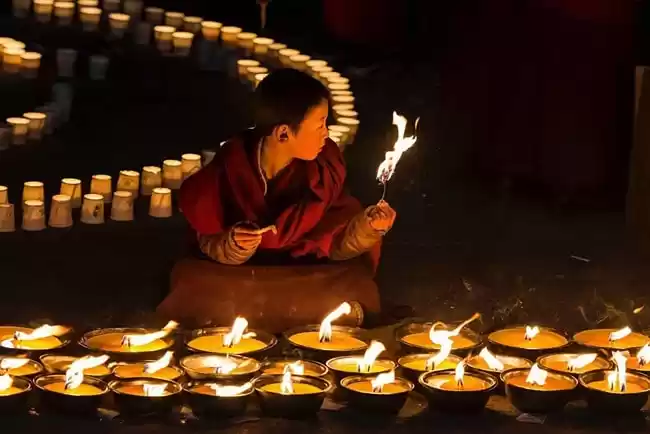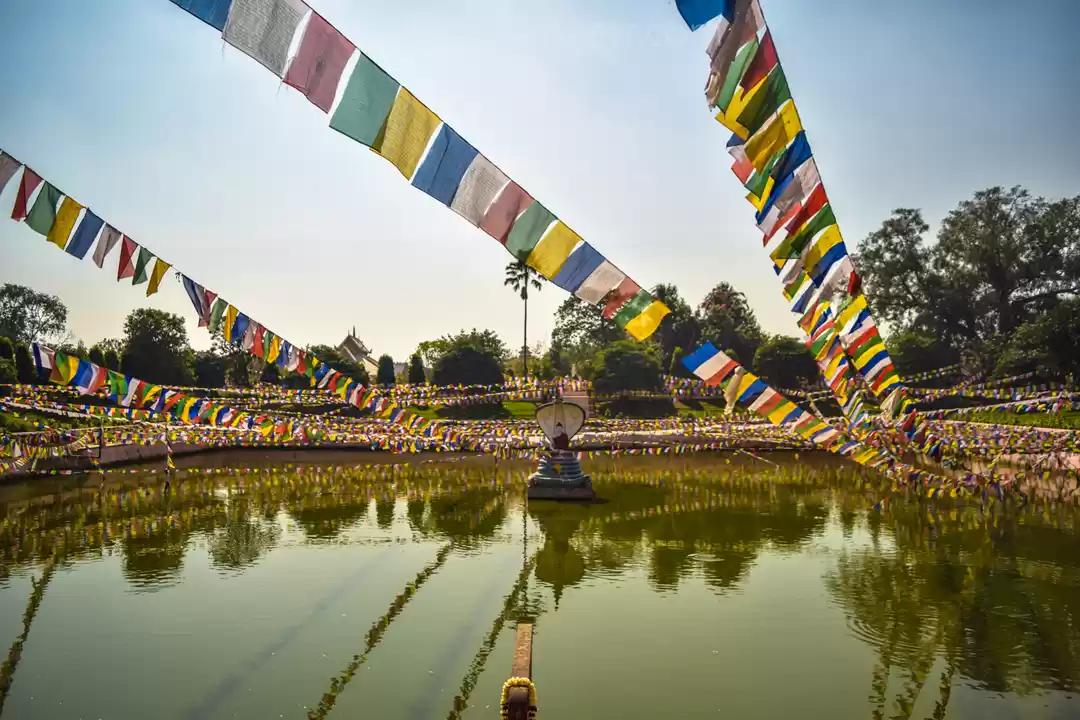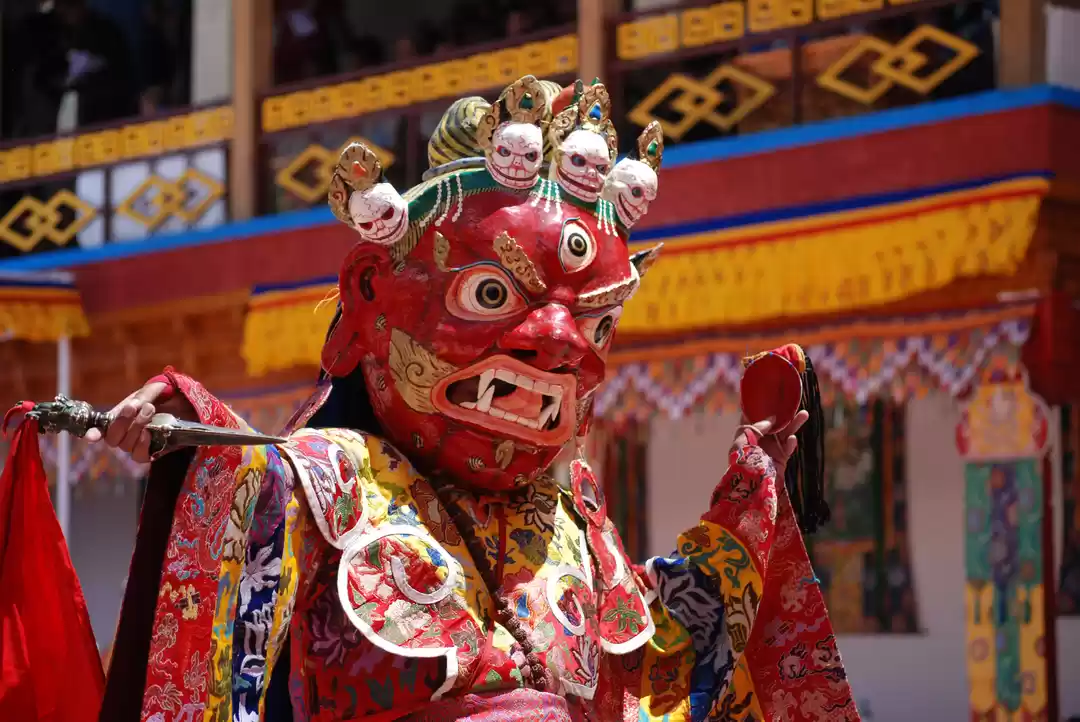Nestled high in the Himalayas, Ladakh is a land of stunning landscapes, vibrant culture, and spiritual depth. Among its many attractions, the region's festivals stand out as colorful expressions of its rich heritage. These festivals are not just events; they are immersive experiences that offer tourists a unique glimpse into the heart and soul of Ladakhi life. Here are some of the most captivating festivals in Ladakh that you shouldn't miss.

1. Hemis Festival
The Hemis Festival is one of the most famous and grandest festivals in Ladakh, celebrated at the Hemis Monastery. This festival honors Guru Padmasambhava, the founder of Tibetan Buddhism. Held in June or July, the Hemis Festival is marked by vibrant mask dances known as 'Cham,' performed by monks in elaborate costumes and masks.
These dances depict the triumph of good over evil and are accompanied by traditional music played on drums, cymbals, and trumpets. The courtyard of the Hemis Monastery becomes a sea of colors, with locals and tourists alike coming together to witness this mesmerizing spectacle.
2. Losar Festival
Losar, the Tibetan New Year, is a major festival in Ladakh, celebrated with great fervor and enthusiasm. The festival usually falls in December or January and marks the beginning of the new year in the Tibetan calendar. Preparations for Losar begin well in advance, with homes cleaned and decorated, and offerings made to deities.
The festival involves a series of rituals, including the performance of traditional dances, the preparation of special dishes, and the exchange of greetings. One of the highlights is the making of a 'Khapsang,' a ceremonial pyramid made of flour, butter, and sugar, symbolizing prosperity.
3. Sindhu Darshan Festival
The Sindhu Darshan Festival, celebrated in June, is a relatively new addition to Ladakh's cultural calendar but has quickly gained popularity. It is held on the banks of the Indus River, a symbol of India's unity and diversity. The festival aims to promote national integration and cultural harmony.
It involves a variety of cultural performances, including folk dances and music from different parts of India, showcasing the country's rich cultural tapestry. Pilgrims from across India come to immerse themselves in the waters of the sacred Indus, making the festival a spiritual experience as well.

4. Ladakh Festival
The Ladakh Festival, held in September, is a week-long extravaganza that celebrates the region's rich cultural heritage. Organized by the Jammu and Kashmir Tourism Department, the festival features a range of activities, including traditional music and dance performances, polo matches, archery competitions, and a vibrant parade.
The streets of Leh come alive with processions, with participants dressed in colorful traditional attire. The festival provides tourists with an excellent opportunity to experience the local culture, cuisine, and crafts, making it a highlight of the Ladakhi calendar.
5. Dosmoche Festival
Dosmoche, also known as the "Festival of the Scapegoat," is one of the most important festivals in Ladakh, celebrated in February. It is observed at the Leh Palace and other major monasteries. The festival involves the performance of ritual dances by monks, who don masks and elaborate costumes.
These dances are believed to ward off evil spirits and bring peace and prosperity to the region. One of the most fascinating aspects of Dosmoche is the creation of intricate wooden structures known as 'Dosmoche towers,' which are later dismantled and burned to symbolize the destruction of evil.
6. Stok Guru Tsechu Festival
The Stok Guru Tsechu Festival, held in the village of Stok near Leh, is celebrated in February or March. This festival is unique because it involves oracles, known as 'Lhamo' and 'Lhamo' who are laypeople from the village. These oracles undergo rigorous training and spiritual preparation to become mediums for divine spirits.
During the festival, they perform elaborate rituals and give predictions for the coming year. The festival also includes mask dances, traditional music, and a vibrant display of local culture.

7. Matho Nagrang Festival
Celebrated at the Matho Monastery in March, the Matho Nagrang Festival is renowned for its spectacular mask dances and the presence of oracles. The festival commemorates the victory of good over evil and involves the performance of Cham dances by monks, who don colorful costumes and masks representing various deities.
The highlight of the festival is the appearance of the oracles, who go into a trance and perform feats such as walking on the monastery's parapets blindfolded. The oracles also provide prophecies and advice to the villagers, making it a deeply spiritual event.
8. Yuru Kabgyat Festival
The Yuru Kabgyat Festival, held at the Lamayuru Monastery in July, is a two-day celebration marked by traditional mask dances and rituals. The festival is dedicated to Yama, the Lord of Death, and Padmasambhava, the founder of Tibetan Buddhism.
Monks perform Cham dances to ward off evil spirits and bring prosperity to the region. The festival also includes the creation of a sand mandala, a symbolic representation of the universe, which is later dismantled to signify the impermanence of life.
Conclusion
Ladakh's festivals are a vibrant tapestry of culture, spirituality, and tradition. They offer tourists a unique opportunity to immerse themselves in the region's rich heritage and witness the joyous celebrations that define Ladakhi life. From the grand Hemis Festival to the spiritually profound Dosmoche, each festival provides a unique glimpse into the heart of Ladakh. So, if you are planning a trip to this magical land, make sure to time your visit to coincide with one of these incredible festivals – they are experiences you will cherish forever.

























